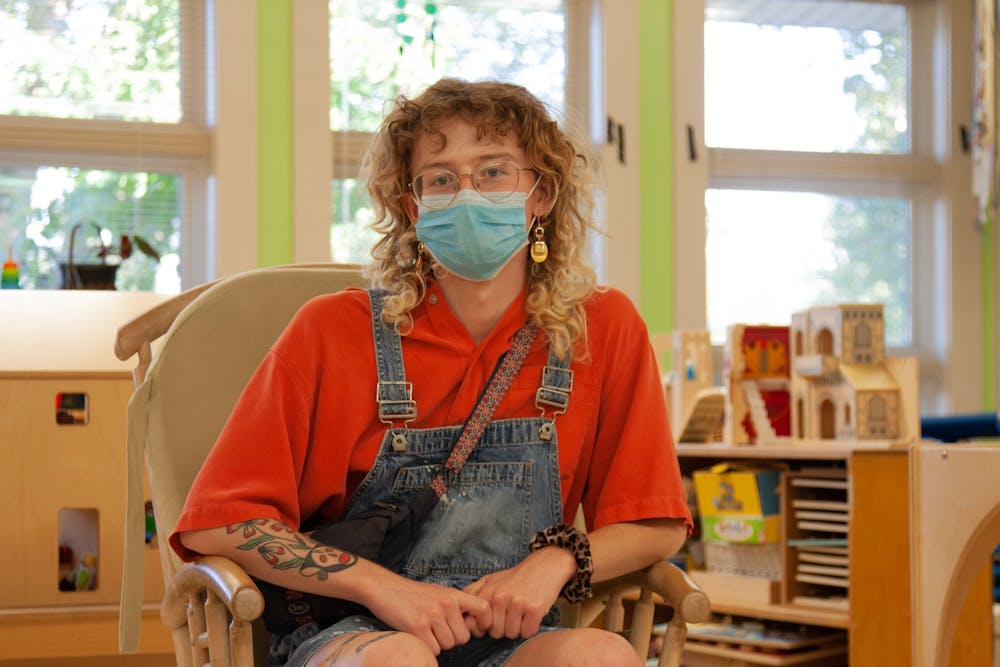Dora Carter spends her mornings sanitizing toys, making snacks, asking kids to wash their hands, hugging them during emotional meltdowns, breaking up fights, answering endless questions, tidying up child-sized chairs, reading aloud and, once, having water poured into her back pocket by an aspiring young gardener with a watering can.
Sometimes after these two-hour shifts at Hoosier Courts Nursery School, Dora can’t leave the parking lot right away.
Instead, she’ll sit in her black 2005 Honda CR-V for a few minutes to unwind. She’ll play punk rock music on the drive home, letting Kate Bush or Betty Blowtorch or Mannequin Pussy channel the frustration or exhaustion she can’t show in front of her preschool students.
Dora, a 21-year-old IU student studying sculpture, has worked part time as an assistant teacher at Hoosier Courts, an IU-owned preschool, since July. While it’s the most difficult, draining job she’s ever worked, it’s also one of the lowest paying: $10.50 an hour.
Even before the pandemic, child care workers earned some of the lowest wages in the country — only 2% of jobs paid less in 2019. But since COVID-19 erupted, the job has only gotten harder, while pay has stagnated and staff sizes have dropped.
Today, preschool teachers don’t just have to worry about keeping kids safe and helping them learn. They have to weigh the risks of exposing themselves daily to dozens of unvaccinated children, some of whom don’t yet know how to wash their hands.
There are always at least two teachers in Room Three at Hoosier Courts, but the herd of scurrying preschoolers they teach appear to truly be in charge.
Dora and the other teachers provide a few structured activities throughout the day. But apart from naptime, the students are free to explore the tiny universe of Room Three on their own terms. They can grab books off shelves, plink notes on the piano, ride tricycles, play in the mud, pretend to be a princess, throw things over the fence, poke other kids, refuse to share, attempt to escape and scream at their leisure.
Dora is always on alert during her shifts. Are any kids hiding? Are there enough teachers in this part of the classroom to handle the number of students? If she’s not busy with a particular task, she scans the area for a mental headcount.
During outside playtime in Room Three’s playground, there are few moments not filled with yells and screams. Dora’s especially attentive outside, where there are more hiding spots and more opportunities to get hurt. She wears Columbia hiking boots or Dr. Martens to work so she can sprint across the sandy, muddy yard in an instant if a kid takes a tumble or gets too rowdy with a miniature shovel.
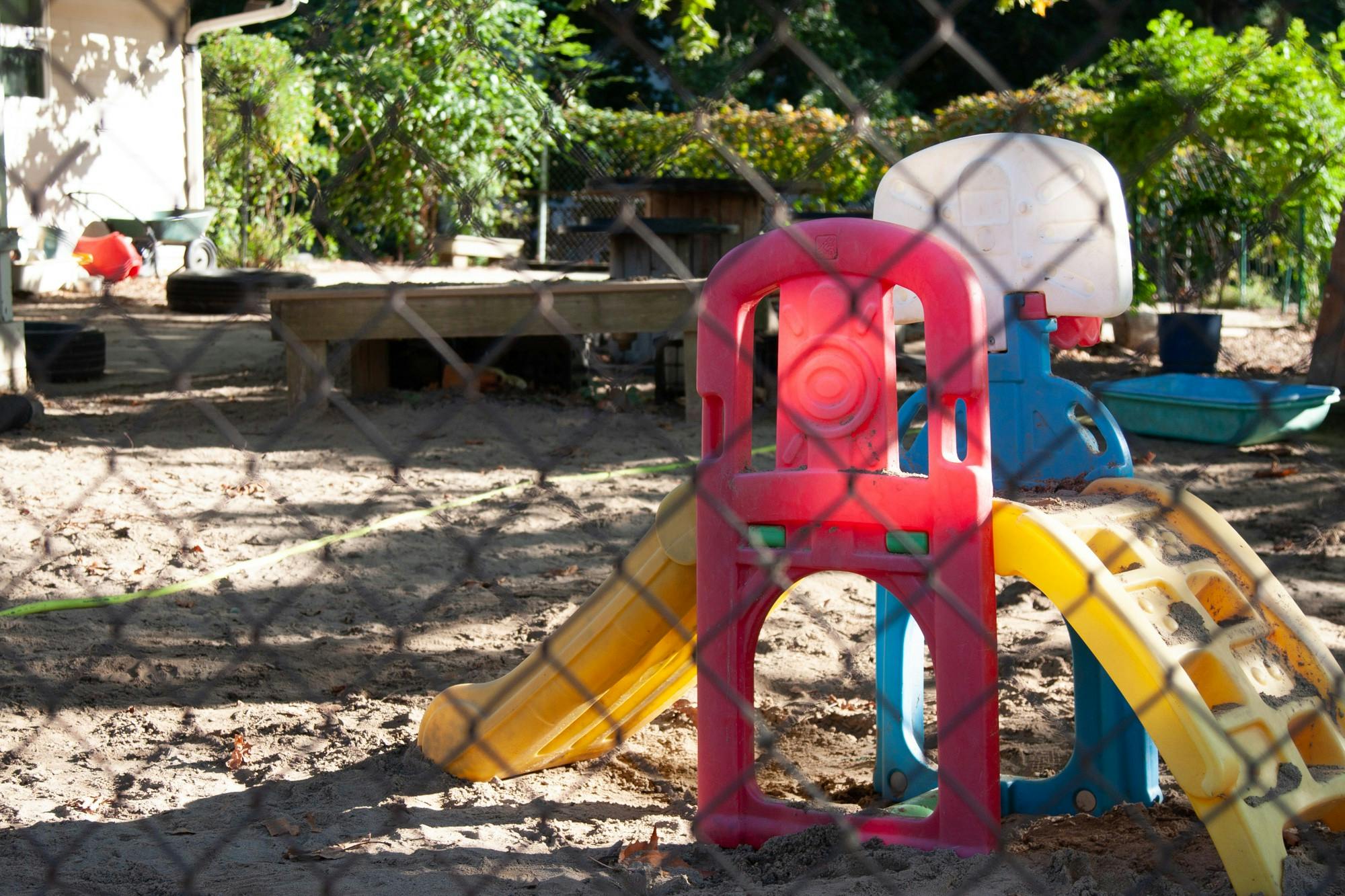
The kids are often sweet. They compliment Dora’s tattoos, especially the flowers on her right forearm and the dog dunking a basketball on her right thigh. They talk about getting their own ink, and a few have come to school with temporary tattoos, decorating their limbs with dolphins, lizards, giraffes, rainbows and Disney characters.
Sometimes, they pick mint leaves from the fairy garden in the corner of Room Three’s yard and offer it to Dora. One student who shares her love for arts and crafts likes to draw her pictures, most recently a tangle of abstract red squiggles on a canvas of creamy construction paper. It has joined a growing collection of preschool art in her room.
But the sweetness can disappear in an instant. At least weekly, the preschoolers hit or kick Dora. She’s more than twice their size, so she tries to avoid physically restraining them.
“I don’t like to be hit,” she’ll say instead.
Once, Dora was trying to placate a hyper student during naptime, and they yelled, “I don’t like you!” She knows they didn’t really mean it, but the outburst still stung.
She thinks about her job at Hoosier Courts all the time. A few weeks ago, it crept into her dreams. She dreamt she was shielding one of her students from a menacing old man. He warned the student not to give away their care and affection, saying it would run out. Dora remembers telling the student, “Don’t listen to him. You have so much love to give.”
In August 2020, after five months actively avoiding closeness with other human beings, it was hard for many of the teachers to return to classrooms filled with children who demanded physical touch. Hoosier Courts Director Joanna Cichocka said she had to fight her instinct to stay 6 feet apart.
But reopening with social distancing wasn’t an option, Joanna said. Physical touch is an important part of development for preschool-age children that has been linked with stronger social skills and brain development.
“Very often if they’re hurt, for example, they just need a hug,” Joanna said. “That's all they need.”
So she and her staff have had to make peace with the fact that their job puts them at higher risk for COVID-19.
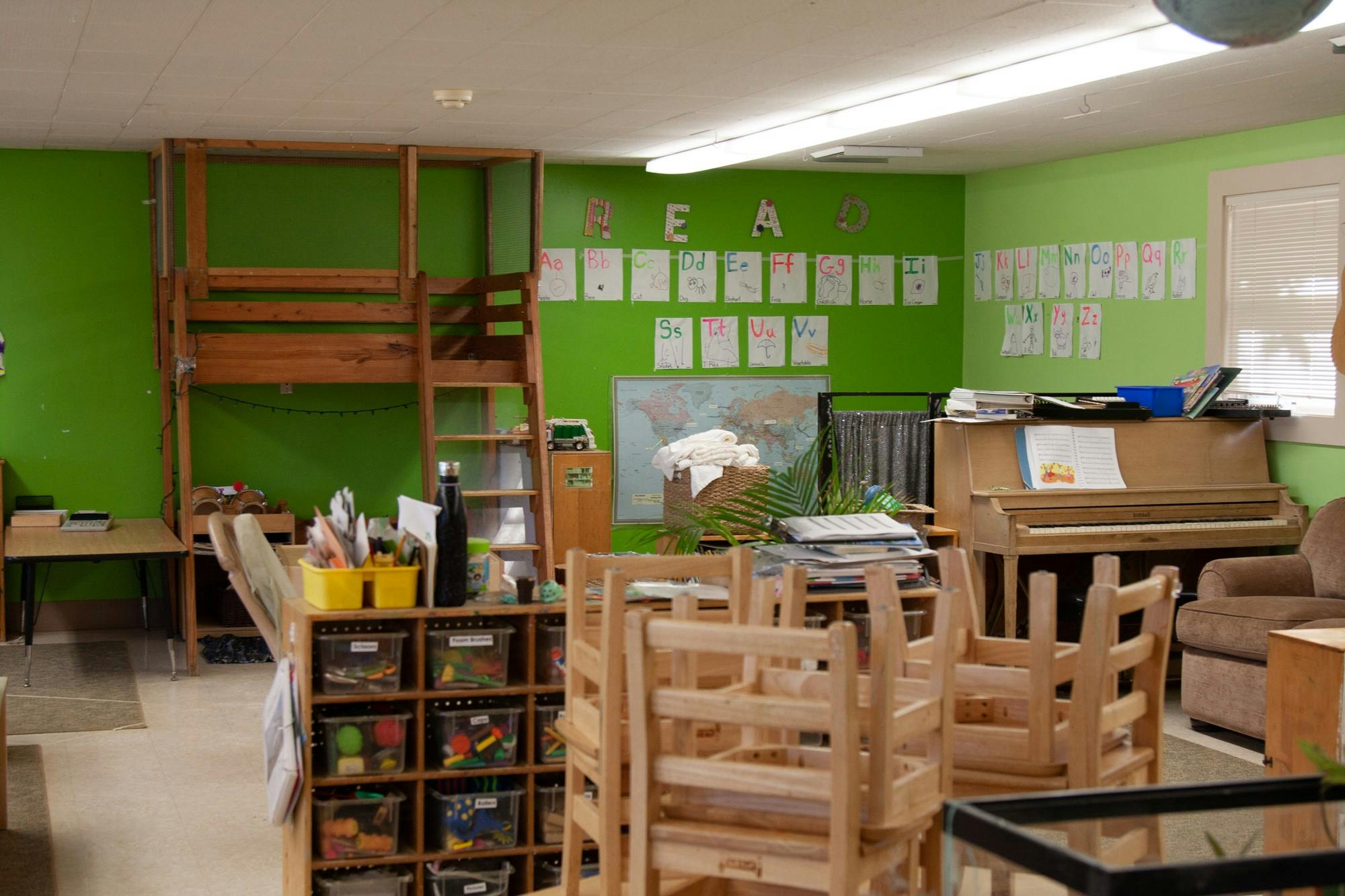
Five-year-olds have only been eligible to receive a COVID-19 vaccine for a week. Children ages 4 and below are unable to receive the vaccine but have also been the least likely to get the virus, accounting for only 2% of all reported COVID-19 cases in Indiana.
Since it reopened last school year, Hoosier Courts has shut down classrooms twice because of COVID-19 exposures in the building in December 2020 and last summer. You can’t really contact trace 3-, 4- and 5-year-olds, so each time, the whole room had to close for 10 days.
To minimize the risk of contracting COVID-19, everyone wears masks, including outside. The kids don’t mind, though they often need replacements when they get food or mud on their masks.
Parents, who used to volunteer often in class, are not allowed to enter the building. They drop their children off at the playground fence, where a teacher points a temperature gun at the student’s forehead before letting them through the gate.
Each room is kept as separate as possible throughout the day. Kids in Room Three don’t mingle with those in rooms One or Two, and if a teacher subs in a different room, they only teach outdoors to avoid sharing air in the classroom.
By now, the preschool has operated for 15 pandemic months, and Joanna said she doesn’t think about COVID-19 as much as she used to. She’s overcome her initial aversion to physical closeness, and she isn’t really worried about catching the virus at work. But the gravity of the 60-plus lives she’s responsible for each day still weighs on her.
Her biggest worry is keeping these children safe — but that was always true, even before the pandemic.
Dora has never known what it’s like to teach without the threat of COVID-19.
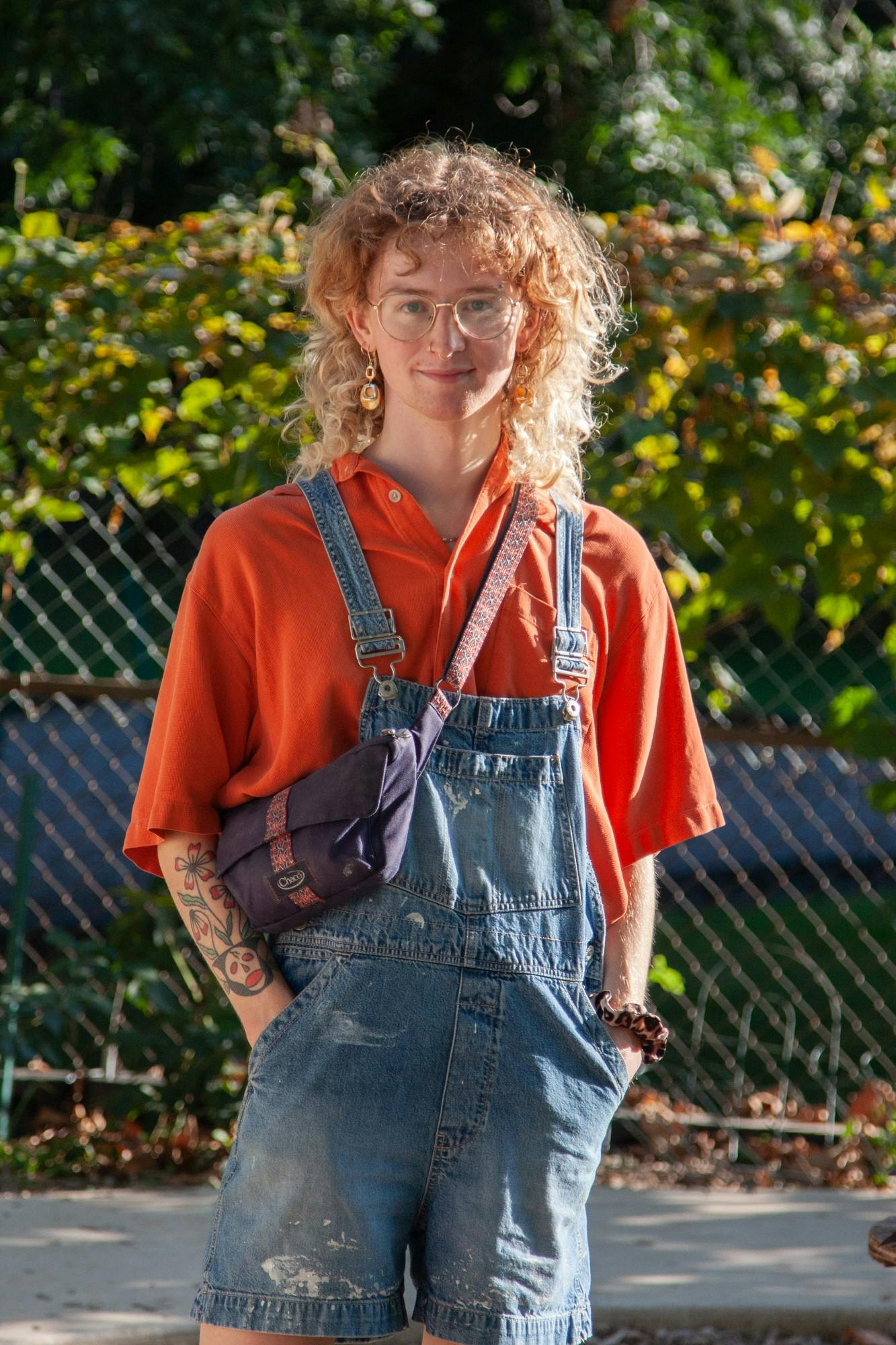
Recently, during one of her shifts, one of Dora’s students couldn’t find their book and snapped, breaking down sobbing. Dora’s first instinct was to go to them, but the river of tears had caused them to pull off their mask, so she had to choose whether to comfort the child or keep her distance.
She ended up taking the student on a walk around the yard, and within 15 minutes, they had calmed down. But this is just one of the many dilemmas Dora faces almost daily as a preschool teacher in a pandemic. Another time, she pleaded with a student who refused to wash their hands.
“We don’t want our friends to get sick,” she remembers telling the student. “You need to clean your hands.”
“They’re clean.”
“Can you please clean your hands?”
“I don’t want to.”
After a while, Dora left the student alone, and a few minutes later they returned to wash their hands on their terms.
These scenarios replay in Dora’s head after she clocks out, and she wonders whether she should have handled anything differently. She doesn’t like being the bad cop, and sometimes she doesn’t know how hard to push.
COVID-19 guidance from Hoosier Courts and the Centers for Disease Control and Prevention help, but they’re hard to interpret in the moment. What’s more important — a comforting hug, or reducing the spread of germs?
Room Three hasn’t closed from COVID-19 exposures while Dora has worked there. But she often worries about spreading the coronavirus to her students, or taking it home with her. She’s fully vaccinated, but she knows until last week, none of the preschoolers could be.
The kids are good about wearing their masks, but in the germy environment of the preschool, Dora fears one exposure could quickly spread. She thinks about it when she makes plans with friends — could this activity expose the kids at school?
Joanna acknowledges that Hoosier Court’s teachers aren’t paid enough.
Hoosier Courts Nursery School is run by IU, so Joanna doesn’t control wages. IU administrators determine the teachers’ pay and set the tuition for families, who are almost all IU employees: $232 per week.
Xinrui Song, a lead teacher who works with Dora in Room Three, has three degrees, including a master’s. She has worked at Hoosier Courts for six years. She makes $33,048.
Most of the assistant teachers at the preschool are college students, like Dora, who typically don’t depend on the part-time income. But about one-third of them are community members, Joanna said.
If these assistant teachers were to work every week of the year including holidays, maxing out IU’s 29-hour-per-week cap on part-time work, they would earn less than $16,000.
Xinrui said she and other staff members have been vocal about seeking pay raises. But in her six years at the preschool, the wage for assistant teachers has increased by $1.
“Six years. One dollar,” Xinrui said.
One reason preschools struggle to pay teachers enough is a failing business model. Indiana regulations require a student-teacher ratio of 1:10 for licensed preschools that serve 3-year-olds, meaning they must hire large amounts of staff compared to how many families pay tuition. According to Hoosier Courts’ website, about 80% of its budget goes toward teacher salaries.
According to a September survey of 216 child care programs in the state, 90% are facing staffing shortages. Half of all respondents said hiring is more difficult now than it was before the pandemic, and 80% said low wages were the biggest hurdle to hiring because almost every other job pays more.
In Room Three, two lead teachers and four to five assistant teachers typically cycle in and out throughout the day. Last summer, the preschool hit a low point in staffing, sometimes with only one assistant teacher available per room. For Xinrui, this meant two months of working from 8 a.m. to 4 p.m. with no breaks. She had no time for parent-teacher conferences or lesson planning and had to keep watching the kids while eating lunch.
“If it’s just two teachers working, we work to death,” Xinrui said. Because of the exhaustion, she said she was worried more about being alert enough to keep all the kids safe.
But Xinrui said she has no plans to leave her job at the preschool. While she’s unsatisfied with the pay, she said this is the highest wage she’s gotten at a preschool in Bloomington, and she thinks it’s the best program — both of her children attended Hoosier Courts. She said she loves working with kids, it makes her feel young, and she enjoys being a part of the tight-knit staff.
“We are really close, like family,” Xinrui said.
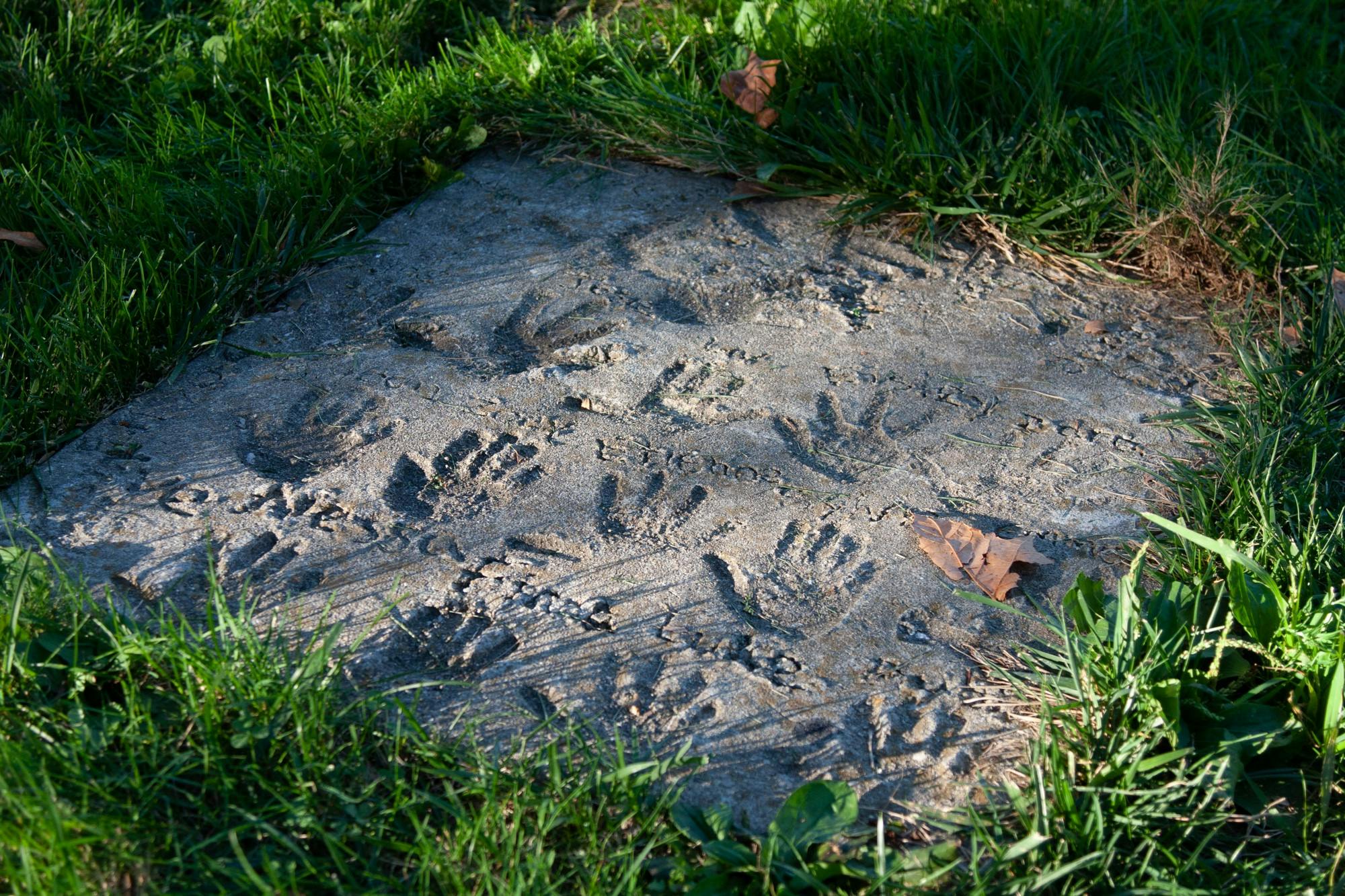
In Room One, a pile of hollow wooden blocks sits stacked up against a blue wall, marked by scribbles and hearts drawn in purple and blue marker.
In 2003, a 3-year-old Dora used these blocks to build expansive structures, not knowing that she would become a teacher in same building 18 years later.
She remembers Room One becoming her whole world each time she was dropped off there. She would play with slime and Play-Doh and dig with blue plastic shovels in the yard and inspect a diverse collection of insects pinned behind glass.
She loved being free to explore all day as a child in Room One, and today, she still believes in the preschool’s play-based teaching model. It’s one of the reasons she was drawn to the online application she found when job hunting over the summer, and why she applied there rather than to one of the many restaurants in town with higher starting wages.
On a cloudy October afternoon, Dora fast walked to her CR-V. She was running late to her second shift of the day at the preschool, but she still took a minute to plug in her phone and push play on a Kate Bush playlist. “Suspended in Gaffa” came on as she sped across town.
“But sometimes it's hard to know if I'm doing it right, can I have it all now?” Kate Bush crooned through the crackly feedback of the old speakers.
Dora checked the time. By now, the other teachers would be cajoling the preschoolers into their naptime cots, dimming the lights and pressing play on an infinite loop of calm chanting.
She parked and grabbed her fanny pack filled with blue surgical masks. Then, she set off for 2.5 hours of teaching the next generation, keeping children alive and putting her health at risk.
She would make $26.25.

